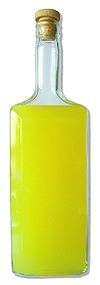People have been eating marijuana for almost as long as they have been smoking the stuff. With the news that
Canada will legalize marijuana by July 1, 2018, the countdown has begun on when the public can legally get their hands on the wide variety of products containing THC, the chemical compound that makes cannabis so enticing to people. If eaten as is, weed isn't very effective, as the digestive system is unable to digest THC. However, THC is fat soluble, which is why people cook their pot with a fat; when cooked and heated, this releases the THC from the cannabis and into the fat. One of the more popular ways to put marijuana in food is using cannabutter. In honour of 4:20, here's a recipe for making this popular pothead spread:
Ingredients
454 g butter
240 mL water
40 g marijuana, grounded up
(NOTE: Until the law is officially changed, possession of marijuana is still illegal. Don't blame me if you get arrested.)
- Put the water and the butter in a saucepan, and begin simmering everything at a low heat to let the butter melt (adding water helps to regulate the temperature, and prevents the butter from burning).
- Add the cannabis, and let the mixture simmer for 2-3 hours, stirring occasionally. Be sure to never let the mixture come to a full boil.
- Once the simmering is complete, pour the mixture into a glass, refrigerator-safe container - use either cheesecloth or a fine strainer to strain out all the plant material. Get as much liquid out of the plant material, then throw it out. Cover and refrigerate what's in the glass container overnight, or until the butter has hardened and separates from the water, which should also be thrown out.
- Use as you would regular butter. To test for potency, start with one portion of a serving, then wait an hour or two. You'll know if you require more or not, so don't drive or use heavy machinery while under the influence.


